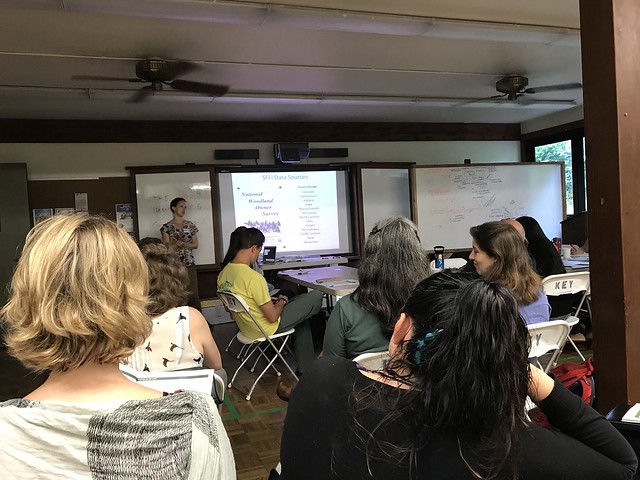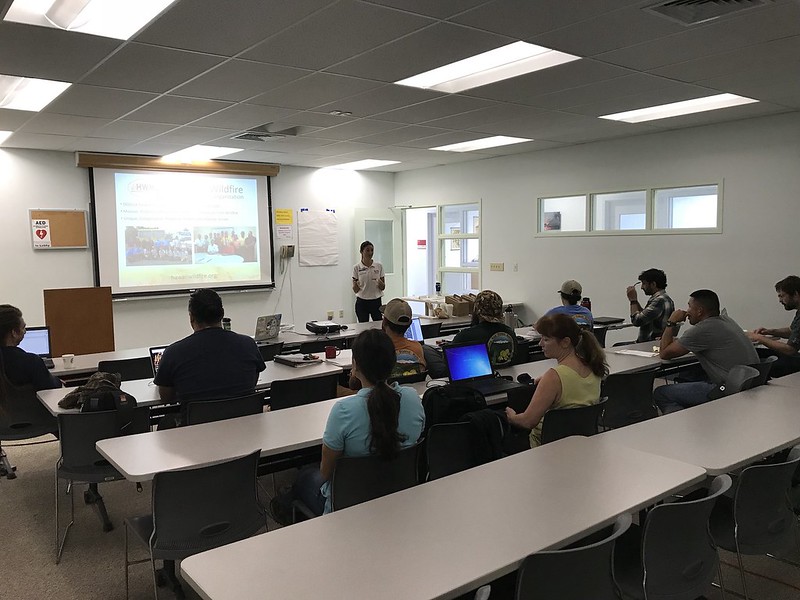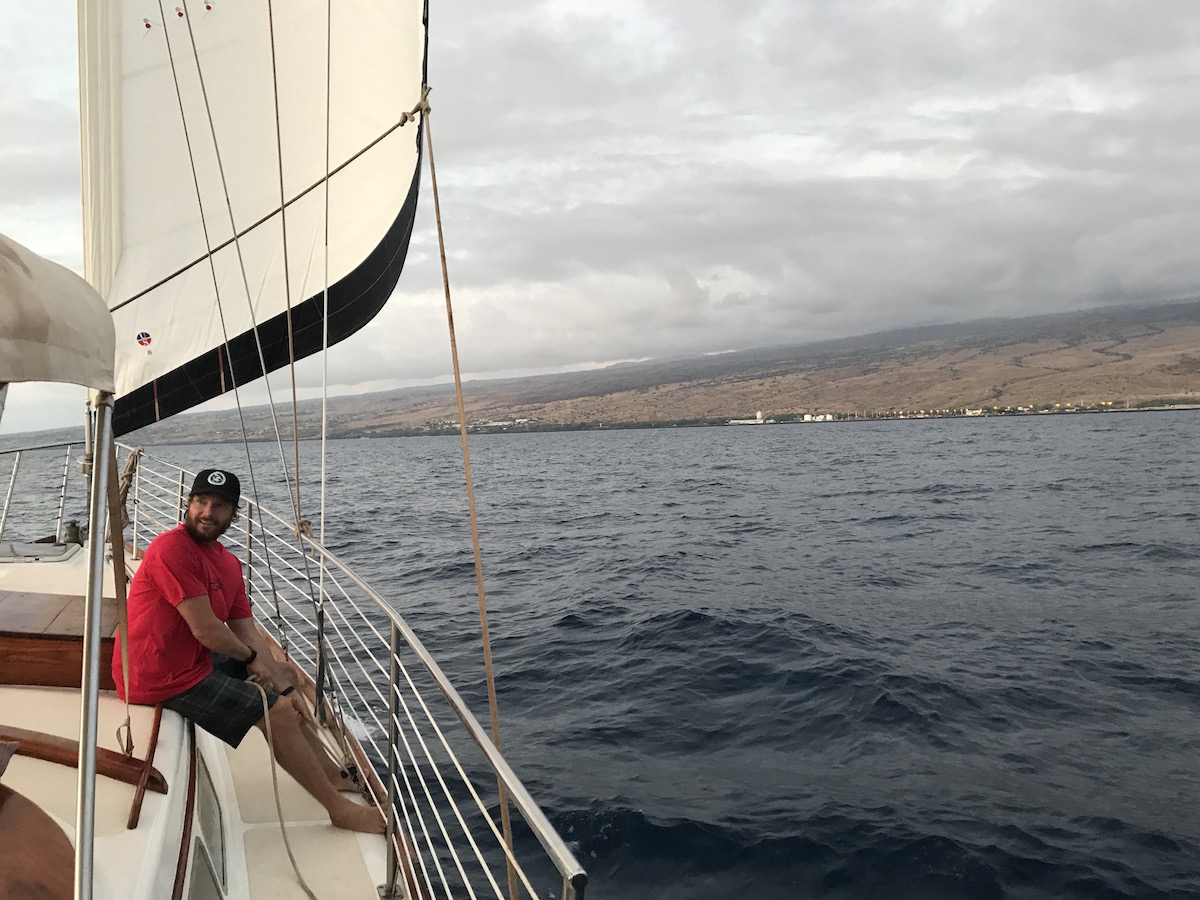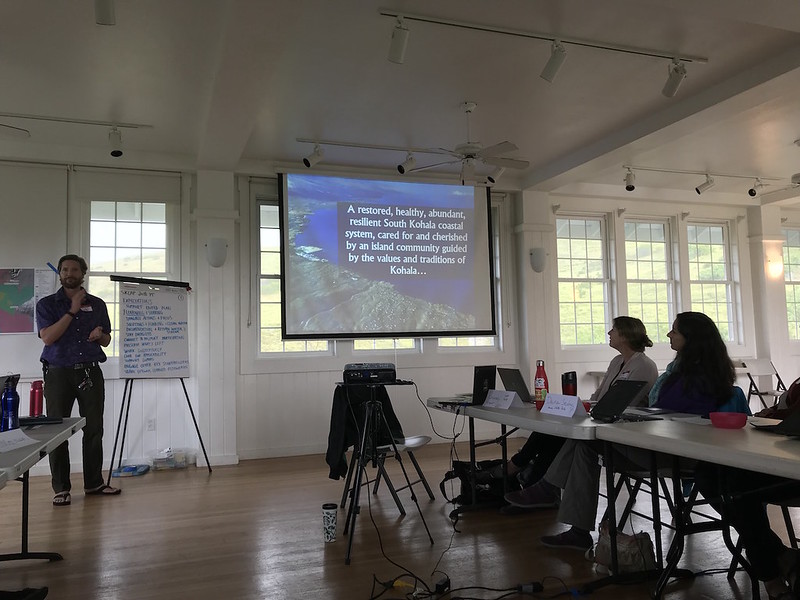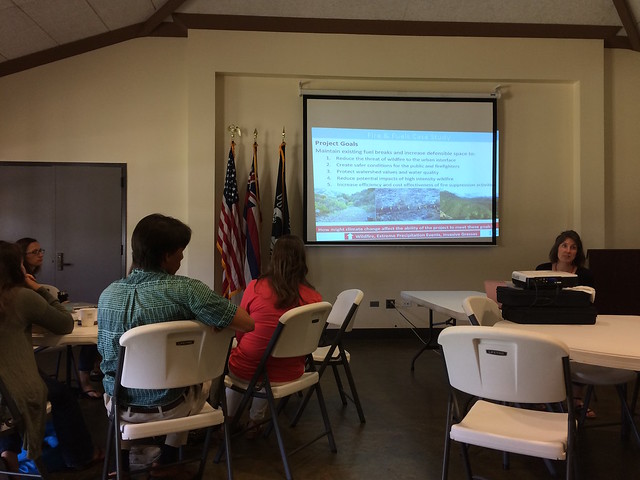Due to increasing conditions that are ripe for more frequent and severe wildfires in South Kohala, including warmer temperatures, decreasing annual rainfall, and increasing consecutive dry days, we could be in for more destructive land based pollution events that destroy reefs. This goes hand in hand with the scientific predictions of increased storms in Hawaii, which, after a wildfire, can make matters a whole lot worse for erosion and sedimentation and thus for our coastal and marine ecosystems. Check out our infographic on climate change’s impacts on wildfire for more information.
On the 2nd day of the workshop, we were part of a “mauka” breakout group where we ranked the threats of fire, storms, and reduced rainfall as contributors of coastal and marine impacts. Fire repeatedly came up as a major threat that needed to be addressed seriously in South Kohala.
In order to think BIG about action planning for South Kohala, workshop attendees were invited to join in on an afternoon of sailing from Kawaihae Harbor to Puako. The sailboat was graciously donated by Maile Charters for the purpose of building stronger connections between the various agencies and organizations involved with SKCP and to look at the connectedness of South Kohala from the vantage point of being on the water. As an added bonus, whales and dolphins frequently visited the boat and we were able to swim around Puako’s reefs to experience the beautiful coral and marine life that are critical to the health of our ecosystems and communities. Before an epic sunset, HWMO’s Community Outreach Coordinator, Pablo Beimler, performed spoken word about the Hokulea’s important message that we need to work together as one “Island Earth” and work with Mother Nature rather than against her.




